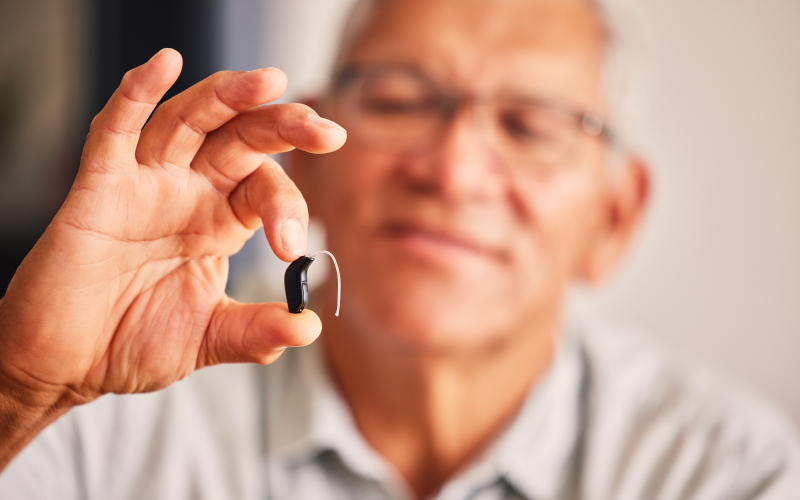
Unrivaled Sound Quality
Phonak has led the way in the development of groundbreaking hearing solutions. Their journey began with a passion for improving lives through better hearing, and over 75 years later, they continue to set industry standards for innovation and performance.
Phonak hearing aids are renowned for their exceptional sound quality. With their state-of-the-art technology, you will experience the richness and clarity of sound in all its forms – from the gentle rustle of leaves to the sweet melodies of music. Phonak is dedicated to making every moment a vibrant listening experience.
Audéo™ Lumity
Empower Your Hearing, Enhance Your Life
Key Features:
- Revolutionary Sound Quality: Phonak Lumity hearing aids are designed to deliver unparalleled sound quality. With innovative technology, you’ll experience rich, natural sound whether you’re in a bustling cafe, a serene park, or a family gathering.
- Dynamic Speech Enhancement: Effortlessly stay engaged in conversations. Lumity’s speech enhancement technology automatically focuses in on the speakers, while reducing background noise, to ensure you hear and understand conversations with ease.
- Customizable Comfort: These hearing aids are tailored to your unique needs. With personalized settings, you can fine-tune your hearing experience for various environments, ensuring maximum comfort and clarity.
- Effortless Connectivity: Stay connected to the things and people you love. Phonak Lumity uses Bluetooth® to stream phone calls, music and audio from your devices seamlessly.
- Waterproof*: Phonak Lumity Life offers peace of mind for those days you get caught in the rain, want to enjoy a soak in a hot tub, or accidentally walk into the shower with your hearing aids. *In Audeo Life only. Up to 50 cm
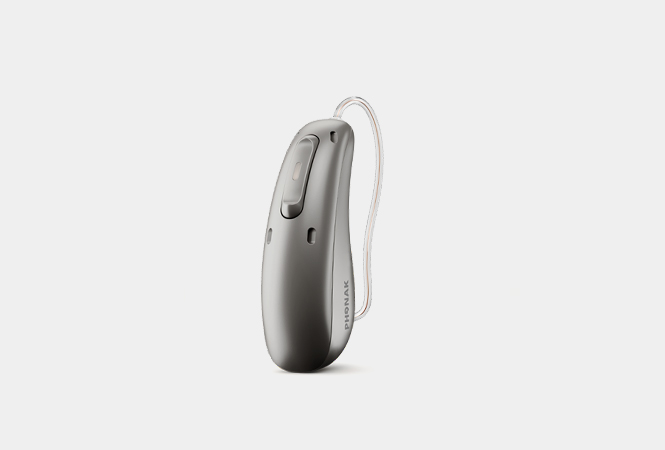
Naída™ Lumity
Experience Exceptional Hearing with Confidence
Phonak Naída Lumity is Phonak’s most powerful hearing device, robust and reliable, allowing you to embrace all opportunities and navigate conversations with confidence.
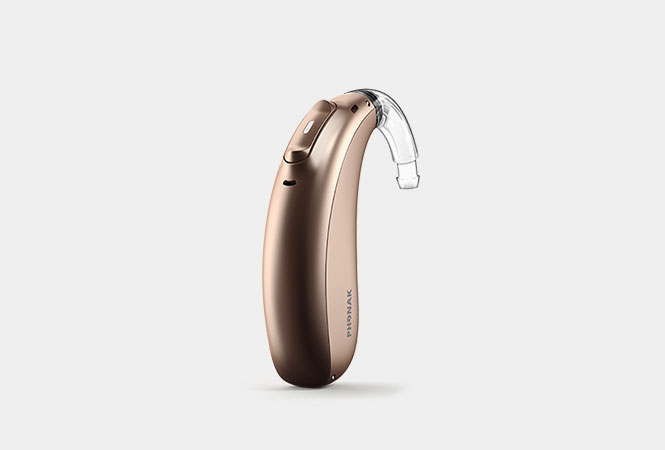
Key Features:
- Exceptional Sound Clarity: Phonak Naída™ Lumity hearing aids offer remarkable sound clarity, ensuring you don’t miss a beat in your daily life. From subtle whispers to vibrant conversations, every sound comes to life.
- Intelligent Speech Enhancement: Stay engaged in conversations, even in noisy environments. Naída™ Lumity’s intelligent speech enhancement technology prioritizes speech, making it easier to follow conversations and connect with others effortlessly.
- Personalized Comfort: These hearing aids adapt to your unique needs. With personalized settings, you can fine-tune your hearing experience, ensuring comfort and clarity wherever you go.
- Seamless Connectivity: Connect with ease. Naída™ Lumity hearing aids offer hassle-free Bluetooth® connectivity, allowing you to stream calls, music, and audio from your devices directly to your ears for a more immersive experience.
*Phonak is now offering more colours for Audeo L & CROS L only including Precious Pink, Caribbean Pirate and Electric Green
Phonak Slim™
Rediscover Sound with Sleek Simplicity
Key Features:
- Ultra-Slim Design: Phonak Slim™ hearing aids are ingeniously designed to be ultra-slim, lightweight and discreet. Their sleek profile ensures a comfortable fit that blends seamlessly with your natural appearance.
- Crystal-Clear Sound: Despite their compact size, these hearing aids deliver crystal-clear sound quality. Experience the richness of sound in all its subtleties, from the softest whispers to the liveliest conversations.
- Intelligent Noise Reduction: Phonak Slim’s™ intelligent noise reduction technology helps you focus on what matters most – conversations. It minimizes background noise, ensuring that you can hear and engage effortlessly in various environments.
- Customizable Comfort: These hearing aids are tailored to your preferences. With personalized settings, you can fine-tune your hearing experience, ensuring maximum comfort and clarity.
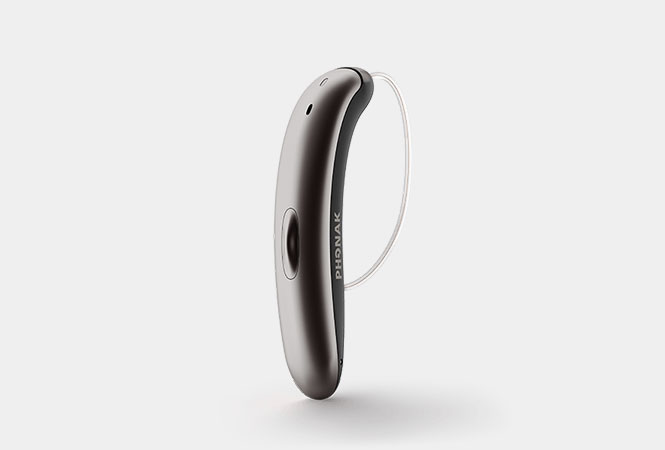
Virto™ Paradise
Unleash the Power of Personalized Hearing
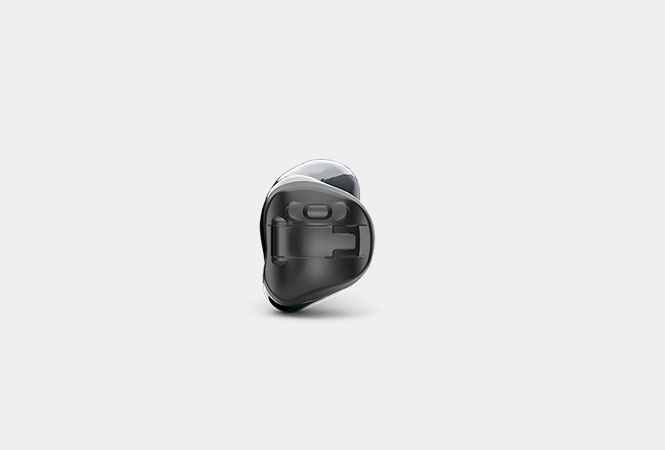
Key Features:
- Customized Perfection: Phonak Virto™ Paradise hearing aids are tailor-made to fit your unique ear shape and hearing needs. Their custom design ensures a comfortable, snug fit for maximum performance.
- Rich, Immersive Sound: Experience sound like never before with Virto™ Paradise. These hearing aids offer a rich, immersive sound experience that captures the nuances of everyday life, from gentle whispers to vibrant conversations.
- Automatic and easy to use: Using artificial intelligence, Virto™ Paradise hearing aids automatically adapts to your environment to prioritize speech and comfort.
- Bluetooth Connectivity: Stay connected. Virto™ Paradise hearing aids offer seamless Bluetooth® connectivity, enabling you to stream calls, music, and audio directly from your devices to your ears.
Phonak’s 100% Invisible
Hearing Aid!
Experience the unparalleled freedom of invisible sound technology. Eager to explore further? Don’t wait – click through to our Lyric™
page now for a deep dive into all the details of this revolutionary product.
Call Us Today to Explore Phonak Hearing Aids
Call us now or book an appointment to learn more about Phonak hearing aids and take the first step towards a world of clear and connected hearing. Our dedicated team of professionals are excited to provide you with all the information you need to make an informed decision about your hearing health and help you find the right hearing aid – just for you!



